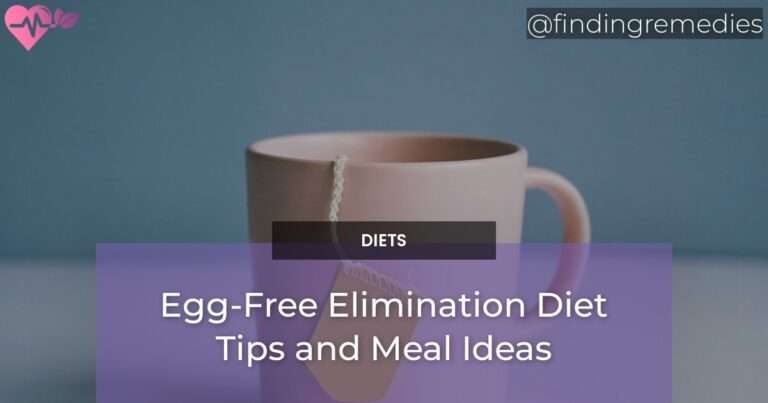An egg-free elimination diet can be challenging, but with the right tips and meal ideas, it can become a manageable and even enjoyable way of eating. Whether you have an egg allergy, follow a vegan lifestyle, or simply want to explore new culinary options, this comprehensive guide will provide you with all the information you need. From understanding egg allergies and finding substitutes for baking to creating delicious egg-free breakfast, lunch, and dinner ideas, we’ve got you covered. We’ll also explore snack suggestions, dessert options, and offer tips for successfully following an egg-free diet. Additionally, we’ll discuss reading food labels, dining out, and communicating your egg allergy to others. Nutritional considerations, protein sources, cooking techniques, recipe modifications, meal planning, and pre-made options will also be explored. Finally, we’ll provide information on seeking support and resources, as well as coping strategies for living with an egg allergy.
Table of Contents
Egg-Free Elimination Diet Tips and Meal Ideas
Understanding Egg Allergy
Before diving into the exciting world of egg-free meal ideas, it’s important to understand what an egg allergy entails. An egg allergy occurs when the body’s immune system mistakenly identifies certain proteins found in eggs as harmful. This immune response triggers various symptoms, ranging from mild to severe, such as hives, digestive issues, respiratory problems, and in severe cases, anaphylaxis. It’s crucial to accurately diagnose an egg allergy and work with a healthcare professional to develop an appropriate elimination diet plan.
Egg Substitutes for Baking
Baking without eggs may seem daunting at first, but there are plenty of egg substitutes that can mimic the binding and leavening properties of eggs. Some popular egg replacements in baking include:
- Applesauce: This fruit puree adds moisture to recipes and works well in cakes, muffins, and quick breads.
- Bananas: Mashed bananas can serve as a natural sweetener and binder in baked goods such as pancakes, cookies, and brownies.
- Flaxseed or chia seeds: When mixed with water, these seeds form a gel-like substance that can be used as a binding agent in recipes like pancakes and waffles.
- Yogurt or buttermilk: These dairy-based options can add moisture and enhance texture in baked goods.
Experimenting with different egg substitutes can be a fun and creative process, allowing you to discover new and delicious recipes.
ALSO READ
Egg-Free Breakfast Ideas
Starting your day without eggs doesn’t mean you have to sacrifice flavor or variety. There are numerous egg-free breakfast ideas that are both nutritious and satisfying:
- Oatmeal topped with fresh fruits, nuts, and a drizzle of maple syrup
- Avocado toast with a sprinkle of sea salt and crushed red pepper flakes
- Smoothie bowls made with plant-based milk, frozen fruits, and a variety of toppings such as granola and coconut flakes
- Vegetable omelets made with chickpea flour or tofu scramble
These breakfast options will provide you with the energy you need to kick-start your day, while also catering to your egg-free dietary needs.
Egg-Free Lunch Ideas
When it comes to egg-free lunches, the key is to focus on vibrant flavors and textures. Here are some delicious and satisfying lunch ideas:
- Quinoa salad with roasted vegetables and a tangy lemon vinaigrette
- Veggie-packed wraps with hummus or avocado spread
- Homemade vegetable soup with a side of crusty bread
- Black bean burgers topped with fresh salsa and served with a side of sweet potato fries
These egg-free lunch options will keep you fueled throughout the day, while also delivering a delightful taste experience.
Conclusion
If a person is looking for an egg-free elimination diet, they now have the tools to get started. There are a variety of egg-free meal ideas out there that are nutritious, tasty and affordably priced. With just a little research and planning, it’s easy to find a meal plan that fits individual nutritional needs and taste preferences. Likewise, the sodium and preservative contents in packaged foods can be controlled by reading labels carefully and selecting items carefully. Remember, when it comes to an elimination diet, it’s important to reach out to a healthcare professional who can better assess individual needs and concerns.

